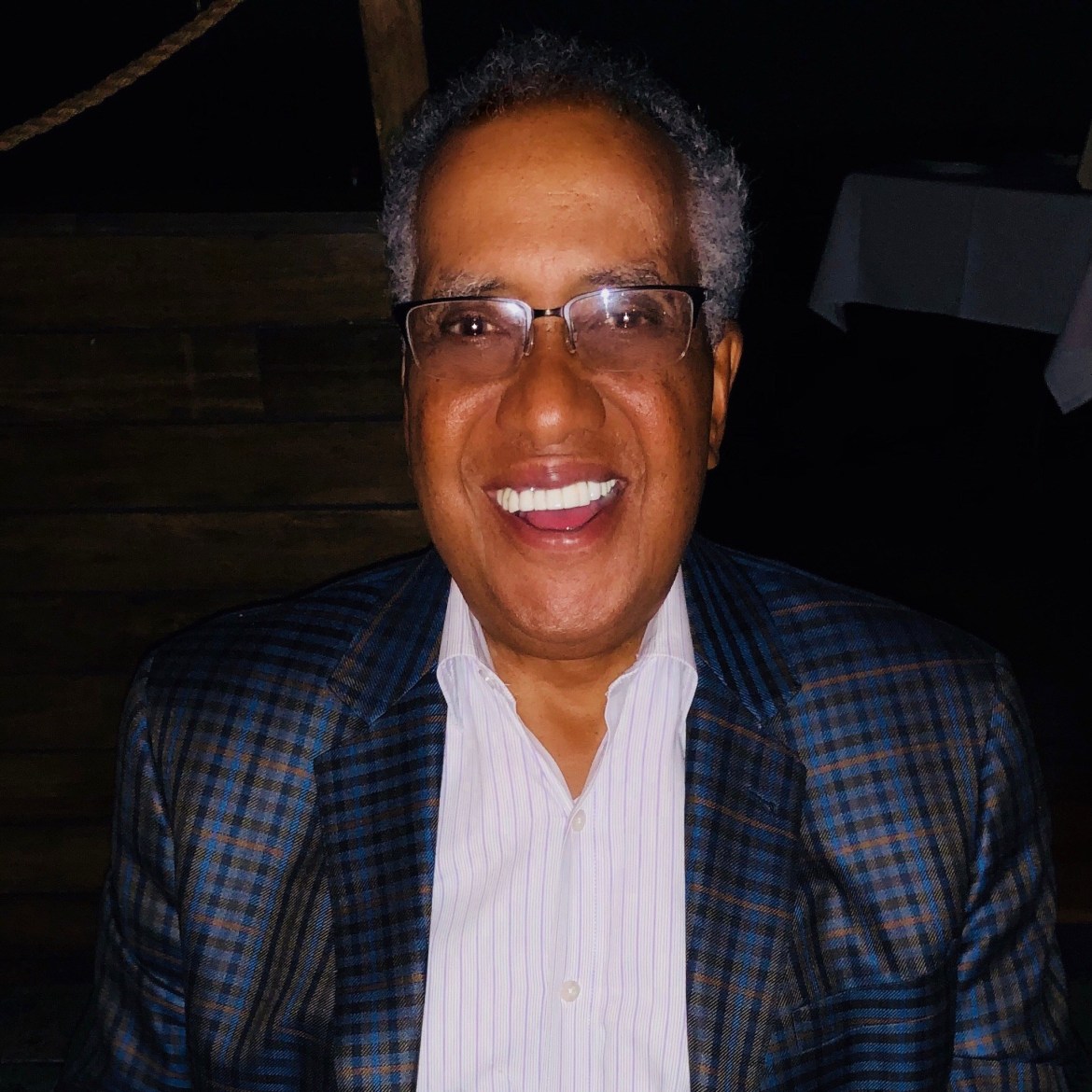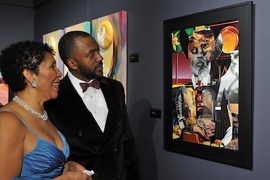After my third visit to the slavery exhibit at the National Museum of African American History and Culture in D.C. recently, I was reminded of the horrendous brutality visited upon Africans by the then All-American institution of slavery.
I’ve read many books, seen the movies and attended lectures by, and studied with, African scholars. However, the Museum’s visual, written, and three-dimensional depictions resonated with me differently this time. I was touched, angry and upset.
From its outset, the Museum has given urgent voice and painful face to the 12.5 million Africans sent across the Atlantic, not to mention the 1.8 million who died in transit and were discarded overboard like waste.


What I wasn’t prepared for was the economic impact that slavery had on the emergence, survival and expansion of this nation. The Museum has upped the ante! By displaying the enormous role played by the cotton, rice and sugar industries, we begin to appreciate the fundamental role Black slavery played in the birth and development of these United States.
As a construction contractor, my company routinely estimated 50 percent of any project to be the cost of labor. Thus, a $10 million project would be budgeted with $5 million in worker pay. The balance would be equipment, overhead and profit.
But what if labor was free? That would enrich my company by $5 million on that job alone. Multiply that by numerous projects over a period of decades and you see enormous wealth creation for me, my partners, and generations that follow. Slavery provided free labor across multiple industries in the U.S. for over 200 years.
Following this last Museum visit, I joined my wife and two friends on a trip to George Washington’s estate at Mount Vernon. The walls there are inscribed with quotes such as, “I cannot tell a lie,” and, “ I believe in America’s Constitution.”
Not only did these declarations not ring true, they offended me. George Washington became a slaveholder at age 11 after inheriting slaves from a relative. He embraced this travesty as a boy, ending up with over 300 slaves at Mount Vernon by the time of his death.

Midway through this tour of lies, my mind simply quit. How could the President this place was celebrating, with its founding Declaration of “All men are created equal,” enslave millions of Africans and treat them as less than human?
It wouldn’t compute. Did I miss the Kool Aid or the “Aha!” moment? The truth of the African History Museum simply didn’t square with the Mount Vernon tableau, showing, for instance, a happy and contented “enslaved servant” working in Washington’s wine press. I was betwixt and between.
Telling Unvarnished Truth
Then to the rescue came the New York Times with its 1619 Project. It’s an 18-sheet special section and 100-page special magazine published Sunday, August 19, 2019.
The 1619 Project recognizes the 400th anniversary of 20-odd slaves transported to the Virginia Coast in August 1619 – the first contingent of what would become a veritable flood of transformative free labor.
The 18-pager cover has historian John Hope Franklin’s quote, “We’ve got to tell the unvarnished truth.” After all, 400 years after enslaved Africans were first brought to Virginia, most Americans still don’t know the full story of slavery.
The 100-page magazine states: “In August of 1619, a ship appeared on the horizon near Port Comfort, a coastal port in the British Colony of Virginia. It carried more than 20 enslaved Africans, who were sold to the colonists.
“America was not yet America, but this was the moment it began. No aspect of the country would be found untouched by the 250 years of slavery that followed. On the 400th anniversary of this fateful moment, it is finally time to tell our story truthfully.”
At a time when print news media is drastically losing readers, advertisers and in-house writers, the New York Times has created a journalistic masterpiece.

With literary contributions from over 29 noted writers and financial supporters that include Wilson Chandler, John Legend, and the NAACP Legal Defense and Educational Fund, this unearthing of forgotten truths is deserving of a Pulitzer Prize and other awards.
Why don’t more Americans know about slavery, or simply dismiss it as a dated entry on an historic timeline?
Nikita Stewart suggests some answers on the first section of the 18-pager headlined, “Why we can’t teach it?” She cites The Geographical Reader For The Dixie Children by North Carolina’s Marinda Branson Moore, which was published in 1863, the same year as the Emancipation Proclamation during the Civil War.
Excerpts from the book include these:
Q: Which race is most civilized? A. The Caucasian.
Q. Is the African savage in this country? A. No, they are docile and religious here. Q. How are they in Africa, where they first came from? A. They were very ignorant, cruel, and wretched.
In 2017, the Southern Poverty Law Center reviewed 12 popular U.S. history books and surveyed more than 1,700 social studies teachers and 1,000 high school seniors to understand how American Slavery is taught and what is learned.
It turns out that there is widespread ignorance among students. In most cases, slavery was viewed as a point in a historical continuum, with 92 percent of the students indicating they did not know that slavery was the central cause of the Civil War.

Shortly after the Civil War, white southerners and their sympathizers embraced “The Lost Cause” narrative, ignoring slavery’s role and casting the battle as a fight between the South and the North over “States Rights”.
The study further found that 80 percent of the county’s 3.7 million teachers are white. So many educators who grew up believing the Civil War was about southern states’ right-to-govern are among those that select text books.
The Law Center’s Maureen Costello observes: “These decisions are being made by people who learned about slavery in a different way in a different time.”
Elementary school children learn about the nation’s founders, but do not learn that many of them owned slaves. They are revered as heroes…without the evil habit.
Hassan Kwame Jeffries, writing in the Law Center study, concludes that “we are committing educational malpractice.”
A Difference In Realities
The late Thomas Bailey of Stanford, whose American history textbook was popular across the country, was influenced by the so-called “Dunning School” of thought, which held that southern whites were more realistic about the prospects of Blacks becoming full citizens with voting and other rights.
They argued that the Reconstruction program imposed on the vanquished South by idealistic northerners was detrimental to whites and not all that helpful to freed slaves.
This idea, along with “the Lost Cause” notion, led to imposition and strengthening of Jim Crow laws, most of which were not undone until the 1960s. One could argue that these same racist attitudes continue to underlie white prejudice to this day.
Costello cites misleading language in books. For instance, Thomas Jefferson’s relationship with Sally Hemmings is described as “intimacy”, and white masters are said to all-too frequently force their “attentions” on female slaves. Is this not a too-delicate way of describing rape?
This kind of sugar-coating history is crucial to understanding the difference in perspectives between Black and white Americans. Blacks have either heard about it in family talk, or intellectually investigated it, or something in between.
For those of us who benefitted from high school and college, our Black fraternities and sororities did much to communicate the Black experience across generations. White folks, without access to truth-telling history, without family discussions, within segregated schools and neighborhoods, are too often bereft of racial understanding and empathy.
This gulf explains why some things that are so obvious to Blacks can be deemed inconsequential by white friends. Our relationships and frames of reference are grounded in different informational realities.

Bridging this chasm about how slavery is taught, understood and analyzed is the first mission of the 1619 Project. This is as it should be, for you cannot fathom the financial impact of slavery on Wall Street, of the Cotton Recession, of Black mass incarceration, or even America’s dietary addiction to sugar without understanding Black slavery itself.
A great place to start is to teach the 1619 Project in schools. Teachers can find curriculums, guides, and activities for students developed at the Pulitzer Center, at Pulitzercenter.org/1619. Pulitzer resources can connect students with journalists who are featured in the 1619 Project issue.
Hampton University commemorated that first landing of the 20-odd slaves at Old Fort Comfort (now mostly known as Fort Monroe) and their research shows these Africans came from Angola and were traded to the white settlers there for food and supplies. The Hampton Branch of the NAACP hosted a prayer vigil at the 1619 marker on the Fort Monroe waterfront.

Hampton U. faithfully gives its students the idea that “a mind is a terrible thing to waste.” Now the New York Times 1619 Project has given us an outstanding work of journalism, full of book references and scholarly research, that give this inquiring mind the impetus and ammo to write more about “these truths” so long unspoken.

(Paul King is a construction consultant and member of Chicago’s Business Leadership Council.)







